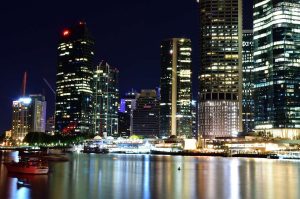Breaking News Today – The Brisbane Metro


The Brisbane Metro is an ambitious $1 billion project that will replace hundreds of yellow and blue buses. This will also improve city connectivity, as more buses will be moved into underground tunnels, relieving traffic during peak hours. Once complete, the Metro will have 60 electric buses and 150 seats. It will run between the central business district and the city’s suburbs. The metro is expected to be operational by 2023, with an initial fleet of 60 bi-articulated metro vehicles. Future expansion will depend on the city’s growth, so the current fleet will grow accordingly.
The Brisbane Metro will offer faster and more reliable travel times than current bus services. By bringing the bus network to the city, it will also provide better access to the suburbs and reduce bus congestion in the central business district. It will also improve connectivity to major growth destinations and will complement the inner city loop and CityGlider networks. Private operators will not be impacted by the Metro. The service will operate on five-minute frequency.
The new metro will include bi-articulated vehicles with three passenger compartments and four double doors. It is designed to carry up to 150 passengers and feature Wi-Fi and customer information systems. It will also be powered by existing busway infrastructure. The new metro will operate with a driver. While delays in the current system have caused public outcry, progress on the new metro has been significant. In the coming years, the system will be expanded.
A new depot for the Brisbane Metro is being constructed in Rochedale, adjacent to the South East Busway. It will feature vehicle fuelling facilities and a 15-bay maintenance garage. It will also feature a layover facility at the Griffith University station. Further, 60 new Metro vehicles are being delivered by HESS and Volgren. The first manufacture vehicle is expected to arrive this year. The new fleet of vehicles will create around 40 new jobs in Brisbane.
The new Metro will complement Cross River Rail by creating an interchange between the bus and rail networks at Roma Street and Boggo Road. It will also improve access to central city destinations. Construction began on April 20 for the new station and sewer pump station. The last update for the project was February 20 2020. In addition to the new underground station, the city will undergo an upgrade of its existing busways and infrastructure. The upgraded busway stations will have new passenger information management systems and improved signage. Extensions to existing platforms will also be required to accommodate increased station activity.
The Brisbane METRO PROJECT is a creative solution to the city’s infrastructure needs. The city was announced as the host city for the 2032 Summer Olympics in July, and its population is rapidly growing. With this new population, it has also created new demands on the city’s infrastructure. If the Olympics were held in Brisbane, the Metro could see an increase of up to six million people. The City Deal was proposed by Scott Morrison, the federal leader, when he won the election last year.
Moreover, Brisbane Metro buses can recharge while operating on the network, and could run 24 hours without going back to the depot. Hess partner Hitachi-ABB designed a battery-electric metro that incorporates 15 fast charging stations of 600 kW and 60 slow charging stations in the depot. Once they reach a charging bay, the buses automatically deploy a pantograph. This allows passengers to get back on the bus without any interruption.
While many stations on the proposed line are still under construction, more are planned. In the south, a new station is planned beneath the Cultural Centre. The new station is expected to have two entrances and will feature canopy-structured ground-level concourses. The 17 busway stations will also receive an upgrade, with new ticket readers and extended platforms. The Cultural Centre Station is not the only stop that will undergo upgrades, but it will be a major landmark on the Metro line.
The Brisbane Metro will have 21-kilometres of service, starting with the University of Queensland and the Royal Brisbane and Women’s Hospital. Then, it will extend to Chermside and the Airport. As the public becomes more aware of the Metro, they will be more likely to support it. And, as a public transport system, this is an investment in the future of the city. The metro will also showcase some of the city’s most innovative green transit solutions.

